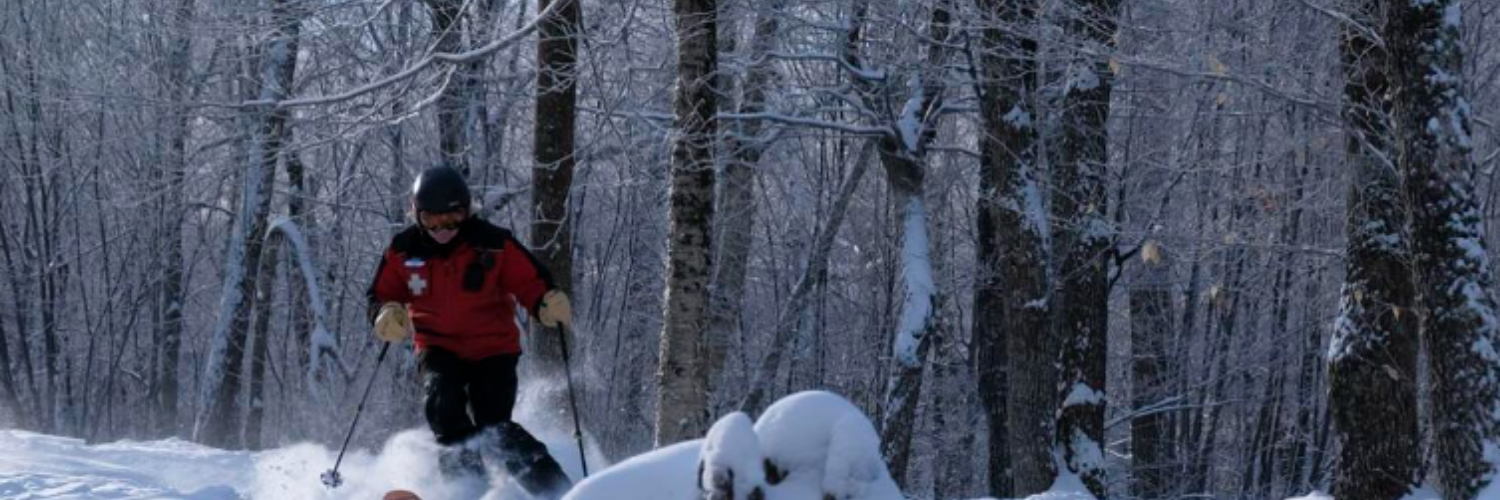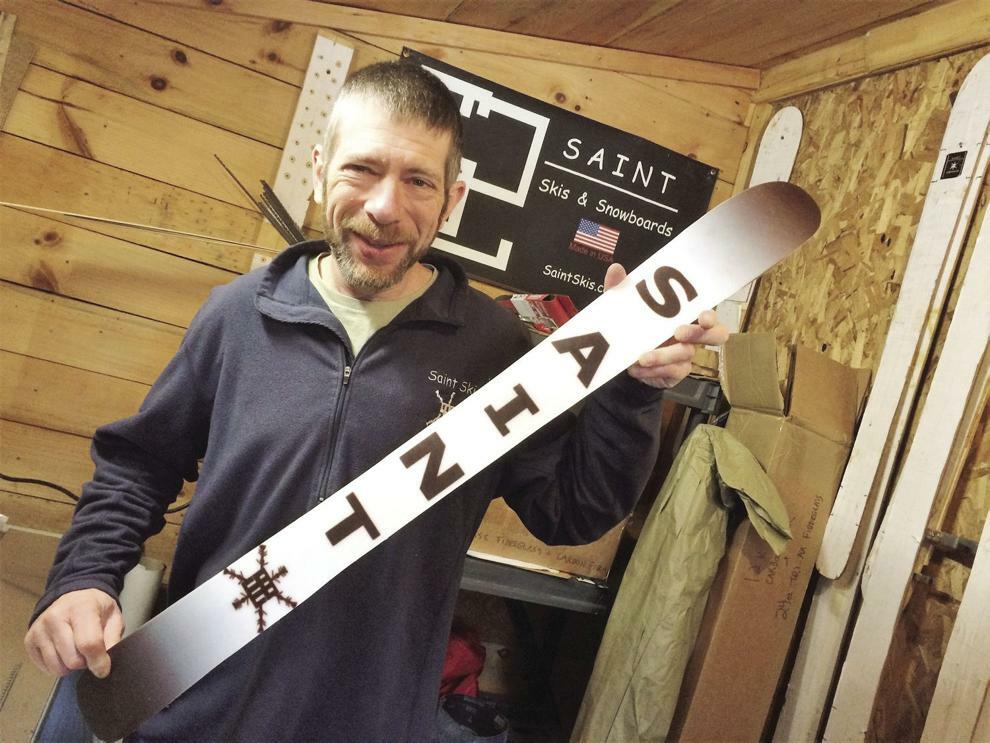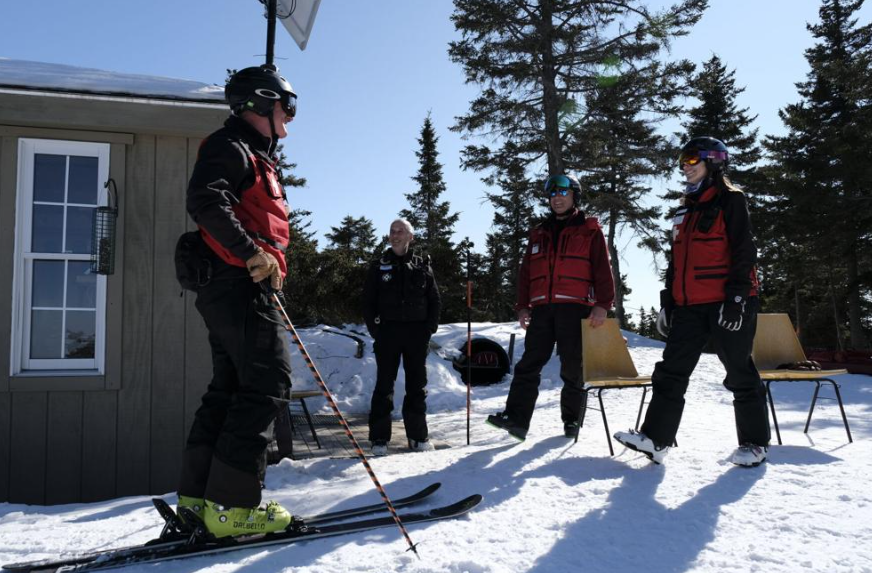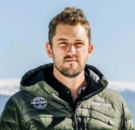
Wanna be a part-time ski bum? Here are some tips from the experts
By Roberta Baker - As Published in New Hampshire Union Leader
Diehard skiers and riders squeeze the most out of winter. And out of spring and fall.
True believers strive to be what most of us secretly would like to be: a ski bum — even with a full-time job.
To get the inside scoop on how to do it, I consulted some experts.
“We often ski on Mount Washington in July,” said Kevin St. Gelais, ski patrol director at Wildcat Mountain. Thanks to a career switch, the former full-time computer programmer now skis more than 120 days each year. He’s first up the mountain in the morning and skis down in the dark after the lifts close. He hikes to ski on his days off and after the ski areas close.
“I can easily say that ski patrol is the best job in the world!” said St. Gelais, who moved to the mountains to feed his habit, and Wildcat often has New Hampshire’s longest ski season.

Renegades or role models, ski and ride fanatics are no longer just powder chasers who live in a van or a bus, crash on people’s couches, and follow the snow from beginning to end across the country.
Today’s ski bums are slope-time maximizers who strategically blend it into their daily life and work.
Phil, a traveling salesman in New Hampshire and Vermont who did not want his full name used, believes he has it down to a science.
He’s at his favorite area when the lifts open to catch the first uncrowded runs. By 9:30 or 10 a.m. he’s conducting business by cellphone or on the laptop he keeps in the lodge. Instead of sucking down coffee for a refresher, he ducks outside for a couple of runs.
Business calls from the chairlift? No problem.
Paperwork? That’s for after the resort closes for the day or night.
Many of his customers don’t know where he is when he reviews their proposals and responds by text or email.
Those that do wish they were with him.
“You don’t want to know how many days I skied last winter,” he says. (Actually, we do: 75, according to the app on his phone.) “My employer doesn’t want to know, either.”
Feeding the happy addiction
Snowboarding and skiing, downhill and Nordic, combine physical exercise, fresh air and adventure, flying and gliding. They’re healthy stress busters and big time endorphin releasers.
When the white stuff starts to fall, whether the forecast calls for a blizzard or a dusting, hardcore skiers and riders seize every pocket of opportunity — or they engineer them.
“I’m extremely fortunate to be able to ride a few mornings a week,” said Amy Daniels, a Northeast product sales and service manager for Vail Resorts based at Mount Sunapee. She works from home two days a week and sometimes hits the road. “I get a few quick laps in the first thing, then get back in the office. Sometimes it’s ‘one-and-done but better than none.’”
Last season, she wondered if she could get in 50 days for her 50th birthday. “Mission accomplished!” she said.
Tyler Ray, a downhill and backcountry skier and director of Granite Outdoor Alliance in North Conway, started his professional life as a lawyer.
“The concept of a ‘ski bum’ is evolving,” he said. “It’s no longer just about slacking off. It’s about integrating recreation into your daily routine … and merging professional and personal passions.”
”Flexible schedules, remote work opportunities, and supportive employers can help you hit the slopes before the first conference call!,” said Ray.

To be your best possible ski bum:
Got a family? Get synchronized.
“The most important piece is having all your gear in one place and being ready to go,” said Robert Drake, Gunstock’s general manager.
“Boot bags are a beautiful thing. Boots, goggles, gloves and pass. Everything you need is in there. Grab it and you’re on the road.”
Plug-in boot dryers do the job while you’re sleeping or eating. Fully-loaded boot bags are poised beside the front door — with hand warmers, toe warmers, extra mittens and socks that will match the weather.
Reward small children for being the first one belted inside the car. Reach optimum highway speed before anyone starts to cry or asks, “Are we there yet?”
Wrangle midweek days off when you can. Early in the season, aim for the first area open. Late in the season, scan for the best spring skiing.
Consider working in the industry.
Not everyone’s a pro, or an instructor or a coach, or knows enough first aid to join ski patrol. But you might consider a part time or weekend job at a ski area.
Throughout the season, ski areas have openings for part-time lift operators, lift attendants, snowmakers, ski and ride instructors and lodge employees.
“That’s where you find people who are checking out a job and want to live that lifestyle,” said Jace Wirth, Cannon Mountain’s general manager. “When you work at a ski area, you put in time on the hill.”

“Ski/ride instructors come from many walks of life — engineers, lawyers, salespeople, contractors, electricians, business owners, teachers, etc,” said Marjorie King, a ski instructor at Attitash Mountain Resort who has a Ph.D. in sports medicine. They make a commitment to their full-time jobs Monday through Friday, then dedicate most winter weekends to work for the ski area, she said.
Working allows you to ski for free, or rewards you with a lift ticket for every day on the job. Many areas have days when they open the lifts for employees before any guests arrive.
Chris Poirier, base operations manager at Attitash, started skiing at age 7 — the only skier in his family. “I skied most of my childhood going to as many mountains as my parents would bring me to,” he said.
In 2018, when he was working in Tennessee, Poirier took a week’s vacation to ski at Jackson Hole in Wyoming.
”As you can imagine, my employer was not thrilled when I sent the email saying I was staying two extra weeks.”
His first industry job involved parking cars and shoveling snow. But it allowed him to ski for free at affiliated resorts.
Later, he joined a local club in Massachusetts (Montachusett Ski and Snowboard Club) and remains a member today. “It was a great way to explore the mountains with other like-minded people,” he said.
Wirth, Cannon’s head, grew up in Steamboat Springs, Colorado, where he was a high school ski racer, skiing five to six hours a day, five to seven days a week.
He said a handful of Cannon staffers — whom he calls the “core faithful,” work when they can to ski whenever they can.
When Gunstock’s Drake was 21, he took a job at Red River resort in New Mexico and rented an apartment across the street, where he could walked to the chairlift and ski to the office.
His job required him to ski between slope-side restaurants to collect receipts and deposits.
”All of my friends were doing the same thing,” he said. “We skied to work and we worked to ski.”
#
Roberta Baker grew up in New Hampshire and on Long Island, where she learned to ski on sixth-grade ski trips. She taught skiing on weekends in high school, including to ski tour groups from New York City, and has worked part-time as a ski instructor at Ragged Mountain in Danbury. She writes about health, the outdoors, and skiing for the New Hampshire Union Leader, and can be reached at rbaker@unionleader.com. Her column NH Winter appears every other Friday in UnionLeader.com during ski season.


